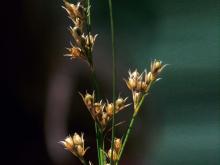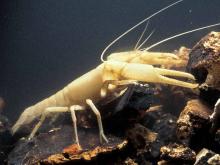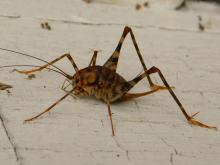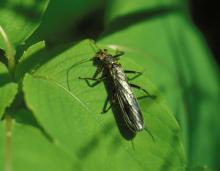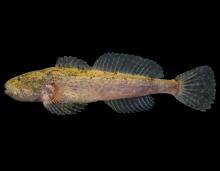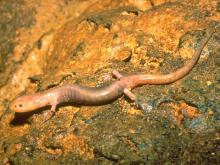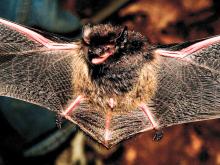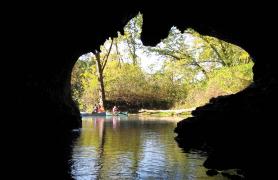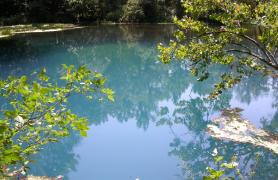
The word karst is the German name for the Krš (or Kras) region on the border between Slovenia and Italy, which has a similar limestone topography. It’s used to describe this type of unique geology of caves, sinkholes, and springs, no matter where on Earth it occurs.
The Karst Cycle
Slightly acidic groundwater flows through cracks in limestone or dolomite, slowly dissolving the rock. The cracks widen to form cavities and eventually a subterranean drainage system. The creeks that flow through caves come from surface water that has seeped downward.
When a cave is below the water table, it is filled entirely with water. (Well-drillers search for these water-filled pockets.) When the cave is above the water table, the cave has air in it and its water flows ever downward. Wherever cave water exits the rock and flows into the open air, it is called a spring.
Some of our largest caves formed ages ago as completely water-filled cavities. Over geologic time, the Ozark Plateau was uplifted, and rivers carved valleys ever deeper into the bedrock, creating bluffs and causing cave passages to be above the water table and to drain.
As the slightly acidic water continues its etching of the rocks, sinkholes can occur where the roof of a cave, and the soil above it, collapse downward into the cave system. When rainwater collects in these depressions, sinkhole ponds form.
When an otherwise normal surface creek disappears underground, emptying into the water table below, it’s called a losing stream.
Natural bridges in karst landscapes represent the last vestiges of an otherwise completely collapsed cave.
Inside a cave, the formation of speleothems (stalactites, stalagmites, soda straws, dripstone, flowstone, and so on) represent the cave’s old age, as water crystallizes previously dissolved minerals, basically reversing the cave-making process, slowly filling the cave back up with rock.
All the land through which water moves into groundwater or into springs or caves is called a recharge area. For a single cave system, this area can be many miles wide. Pollutants, such as agricultural chemicals and animal waste, roadway runoff, leaking septic tanks, contaminants from trash thrown into sinkholes, and even excess silt from a variety of construction and agricultural earthworks, can seep into the groundwater, polluting caves, springs, and well water.
Karst Features
Cave and karst ecological communities are interdependent and often overlap. Browse Aquatic Caves, Sinkholes and Sinkhole Ponds, Springs, and Terrestrial Caves under Related Habitats below.
Most of our caves are in the Ozark Highlands ecoregion, where they occur in soluble dolomite or limestone. Caves also occur in sandstone or igneous rocks and may be found in the Osage Plains and Central Dissected Till Plains ecoregions. There are almost no caves in northwestern Missouri and in the Bootheel lowlands.
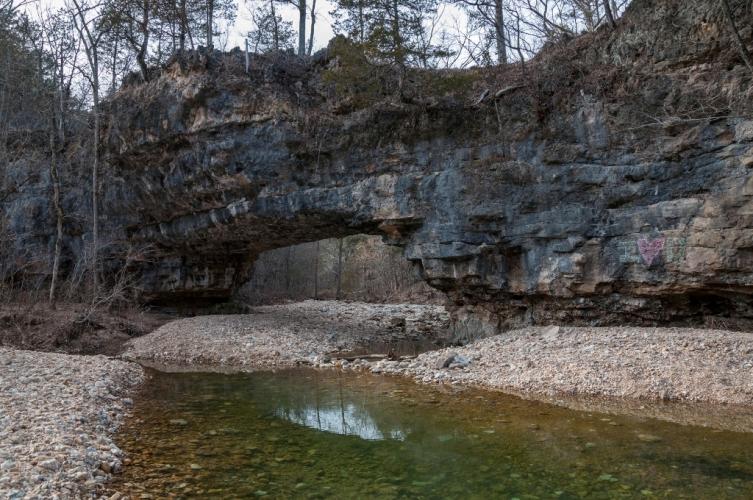

Key species
